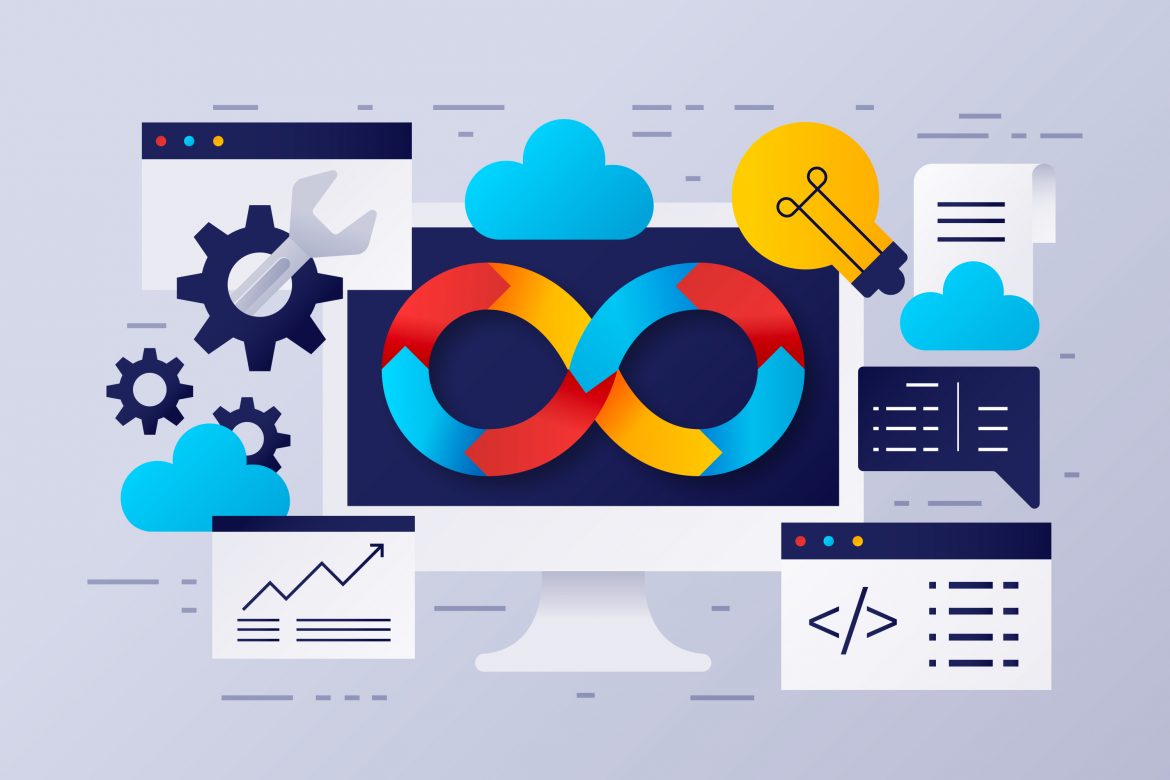In the fast-paced world of technology, staying ahead means constantly adapting and refining how we develop, deploy, and maintain software. One of the most transformative changes in recent years has been the adoption of DevOps—a set of practices, cultural philosophies, and tools designed to break down the traditional barriers between development and operations teams. Implementing DevOps is reshaping how tech teams work, boosting efficiency, collaboration, and responsiveness like never before. Let’s take a closer look at how this revolution is unfolding.
From Silos to Collaboration: How DevOps Is Transforming the Way Tech Teams Work Together
In the old-school tech world, teams often operated in silos. Developers would craft the code, then toss it over the wall to operations teams to deploy and manage. This separation created a lot of friction—misunderstandings, delays, and sometimes even finger-pointing when things went wrong. It was like everyone was rowing in different directions, which slowed down innovation and made troubleshooting a nightmare.
Enter DevOps: a cultural shift that emphasizes collaboration, shared responsibility, and transparency. Instead of working isolated, development and operations teams now work together from the early stages of a project through deployment and maintenance. This isn’t just about using collaboration tools; it’s about fostering a mindset that everyone’s goals are aligned—delivering high-quality software quickly and reliably.
Practically, this translates into regular cross-team standups, integrated planning sessions, and shared dashboards that track progress and issues in real-time. Teams leverage tools that enable continuous communication—think Slack integrations, shared repositories, or automated alerts. When everyone has access to the same information, problems are surfaced faster, and everyone can contribute to solutions.
This integrated approach encourages transparency and accountability. Developers gain insight into production environments, leading to code that’s easier to deploy and support. Sysadmins understand the developers’ needs, making infrastructure more flexible. Testers can run automated tests quickly, catching bugs early. The upshot? Faster time-to-market, higher quality releases, and happier, more engaged team members.
Switching from silos to collaboration takes effort—it’s a cultural change as much as a technical one—but the benefits make the transition well worth it. Teams become more agile, responsive, and aligned around shared goals. The traditional “us versus them” mentality dissolves into a “we’re in this together” mindset, fundamentally transforming how tech organizations function.
Automating and Accelerating: How DevOps Is Revolutionizing Software Delivery and Maintenance
Once teams are collaborating effectively, the next step is making the process as smooth and efficient as possible—and automation is the secret weapon here. DevOps has turned manual, error-prone deployment processes into streamlined, automated pipelines that accelerate software delivery without sacrificing quality.
At the heart of this transformation is Continuous Integration and Continuous Delivery (CI/CD). Think of CI/CD as your team’s conveyor belt—code is automatically tested, integrated, and prepared for deployment with minimal manual effort. Automated tests catch bugs early, while automated deployment steps roll out updates quickly and reliably, often multiple times a day. This rapid iteration cycle means your team can release new features, security patches, or performance improvements much faster than ever before.
Automation tools like Jenkins, GitLab CI, CircleCI, or Travis automate the build and testing processes, ensuring that new code doesn’t introduce regressions. Infrastructure management tools like Ansible, Chef, or Puppet help maintain consistent environments across development, testing, and production. Infrastructure as Code (IaC) takes this a step further—by defining infrastructure configurations in code—you can version, review, and reproduce environments effortlessly.
The advantages are compelling: shorter release cycles, fewer bugs, and more predictable deployments. With automation handling Routine tasks, your teams can focus on high-value activities—designing better features, improving user experiences, or innovating new solutions. Plus, faster feedback loops mean problems are detected and fixed quicker, reducing downtime and increasing system reliability.
Of course, embracing automation and CI/CD isn’t just about tools; it requires a cultural shift towards embracing change, continuous learning, and a mindset open to iterative improvement. There’s an initial investment in training and infrastructure, but the payoff is a more resilient, responsive, and scalable workflow.
In summary, DevOps automation practices are revolutionizing how software gets from idea to users’ hands—making the process faster, more reliable, and more aligned with the realities of today’s digital demands. For tech teams, this isn’t just a nice-to-have; it’s a necessity for staying competitive in a rapidly evolving environment.
Wrapping Up: The Big Impact of DevOps in Tech Teams
Implementing DevOps isn’t a one-time project or a set of tools—you’re fundamentally changing how your team works, communicates, and problem-solves. It drives faster delivery, better quality, and more satisfied teams and customers alike. Whether it’s breaking down silos to foster collaboration or automating the pipeline to accelerate releases, the impact of DevOps is evident across the entire software development lifecycle.
If your organization is still on the fence, remember: embracing DevOps is an ongoing journey. It takes time, effort, and a willingness to rethink old habits. But the dividends—agility, reliability, innovation—are well worth the effort.
In today’s digital age, mastering DevOps isn’t just a competitive advantage; it’s a must-have for any tech team aiming to thrive in a landscape where change is the only constant. So, it might be time to start breaking down barriers and building a more collaborative, automated future—your teams and users will thank you!


